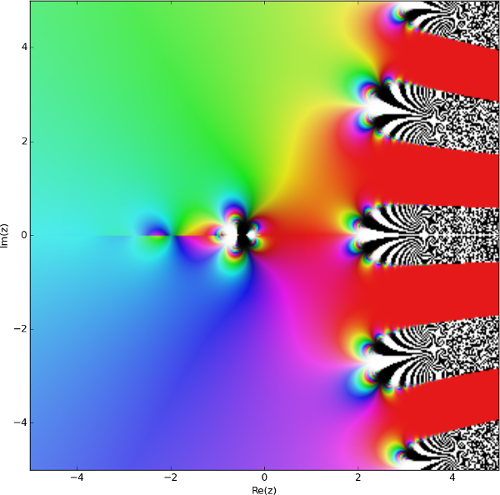hyperop is a small library for representing really, really, ridiculously large numbers in pure python. It does so using hyperoperations.
- Hyperoperation 0,
H0is the successor function,H0(None, 4) = 5 H1is addition,H1(2,4) = 2 + (1+1+1+1) = 6H2is multiplication (repeated addition),H2(2,4) = 2+2+2+2 = 8H3is exponentiation (repeated multiplication),H3(2,4) = 2*2*2*2 = 16H4is tetration (repeated exponentiation)H4(2,4) = 2^(2^(2^(2))) = 65536- ...
- Hyperoperation n is repeated Hyperoperation (n-1)
Fundamentally, hyperop works recursively by applying a fold-right operation:
H[n](x,y) = reduce(lambda x,y: H[n-1](y,x), [a,]*b)
pip install hyperop
To install the latest version use:
pip install git+https://github.com/thoppe/python-hyperoperators
from hyperop import hyperop
H1 = hyperop(1)
print(H1(2,3), H1(3,2), H1(5,4))
# >> 5, 5, 9
H3 = hyperop(3)
print(H3(2,3), H3(3,2), H3(5,4))
# >> 8, 9, 625
from math import log
H = hyperop(4)
print(H(2,5))
>>> 200352993040684646497....45587895905719156736
print(log(log(log(log(H(2,5),2.0),2.0),2.0),2.0) == 2)
>>> True Approximate infinite tetration. Show that sqrt(2)^sqrt(2)^... where the tower continues an infinite amount of times is 2.
H4 = hyperop(4)
print(H4(2**0.5, 200))
# >> 2.0Calculate the incomprehensibly large, but finite Graham's number:
def GrahamsNumber():
# This may take awhile...
g = 4
for n in range(1,64+1):
g = hyperop(g+2)(3,3)
return gPlot the phase angle on the complex plane over tetrating four times H4(z,4)
from hyperop import hyperop
import mpmath
H = hyperop(4)
f = lambda z: H(z,4)
mpmath.cplot(f, verbose=True, points=100000)Sometimes, especially in the case of small complex numbers, you only care about numbers that stay bounded during the calculation.
That is, you'd only like to keep the result for some bound z such that H[n](a,b) <= z.
The class bounded_hyperop does just that:
from hyperop import bounded_hyperop
Hb = bounded_hyperop(4, bound=1000)
print(Hb(2,3), Hb(2,4))
# >> 16 infHigher order hyperoperations (from tetration and above) are not associative, thus tetration H4(2,4) = 2^(2^(2^(2))) = 65536 is not H4(2,4) != 2^(2*2*2) = 256.
Since tetration is not defined for non-integral heights, the second argument of tetration and both arguments of pentation and above are restricted to non-negative integer values.
Hyperop was featured in issue #231 of Python Weekly!
This library was first presented at DC's Hack && Tell (Feb. 2016). Talk link.
This work is licensed under a Creative Commons Attribution-ShareAlike 4.0 International License.

